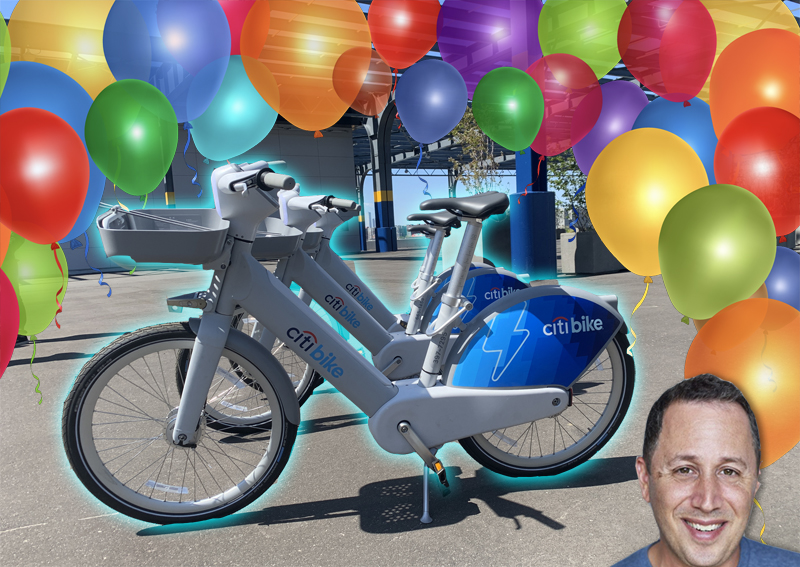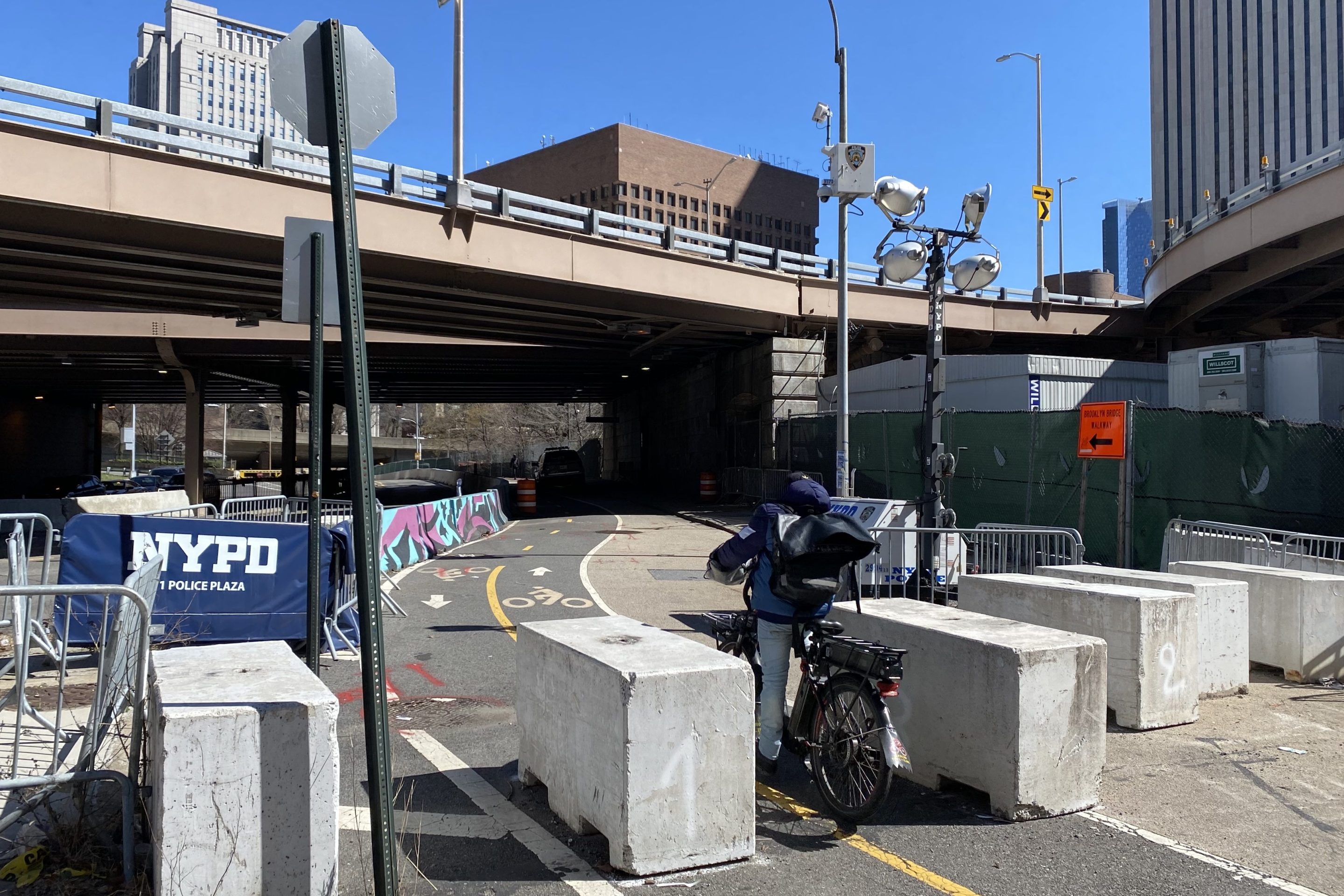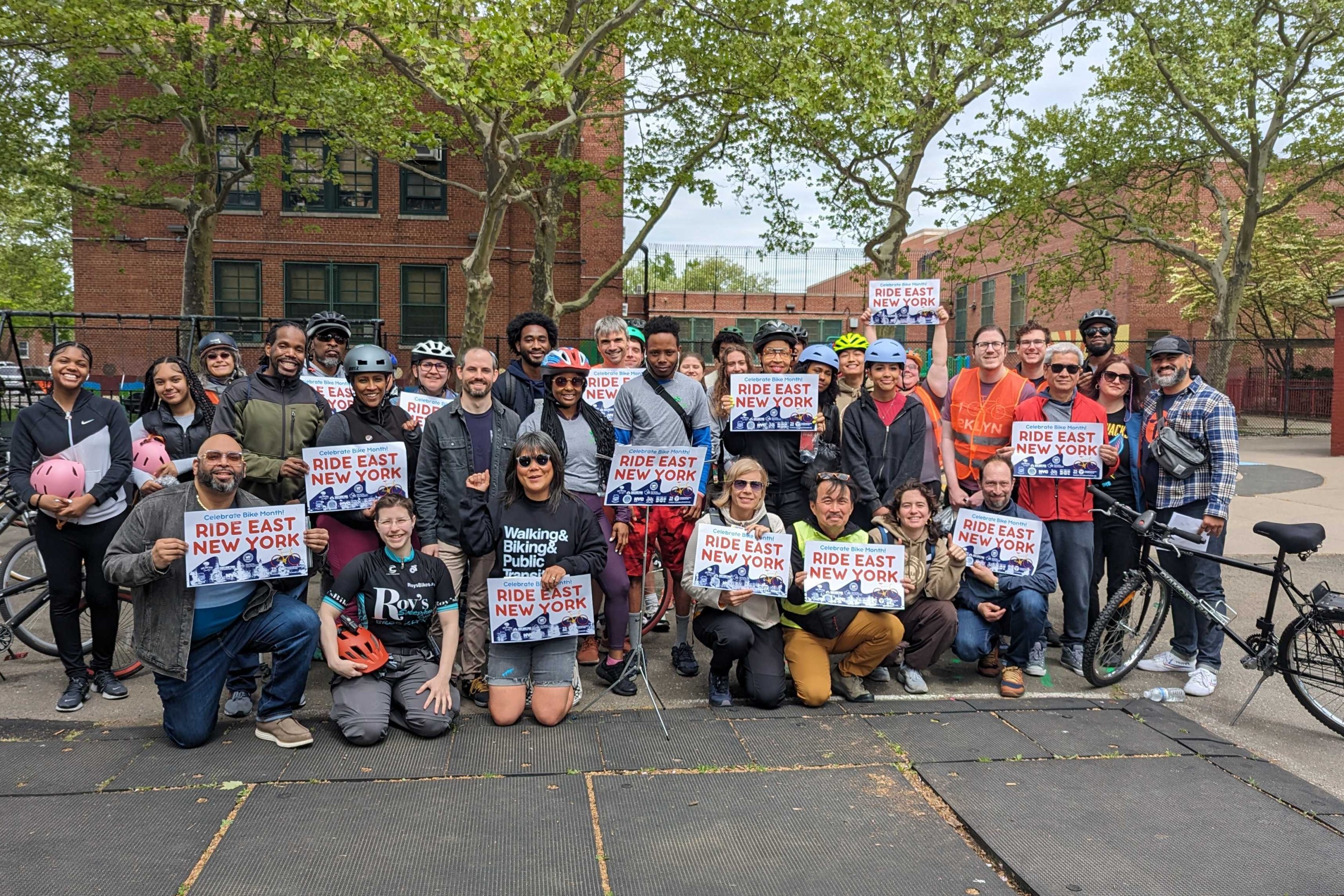Opinion: 10 Years of Citi Bike, 3 Lessons Learned
12:01 AM EDT on May 29, 2023

Happy birthday, Citi Bike.
It is probably hard for a person who moved to New York sometime within the last 10 years to imagine a time BCB — Before Citi Bike. Yes, dear reader, there used to be a time when if you wanted to ride a bicycle in the city, your only option was to purchase and ride your own. (Or steal someone else’s, I suppose.)
How times have changed. By giving people convenient alternatives to driving, creating choices beyond awkward subway transfers or even simply offering people the peace of mind of never having to worry about bicycle theft, Citi Bike has left a lasting impact on New York, expanding the idea of what streets are for and who rides bikes. The gradual expansion of the bike lane network has certainly helped, but it was Citi Bike that served as the catalyst that turned cycling into an everyday transportation option for countless New Yorkers.
It’s a sign of Citi Bike’s success that most users probably don’t remember or weren’t even around to experience the controversy and uncertainty that accompanied Citi Bike before it launched 10 years ago on Memorial Day 2013. Thankfully, what happened is not something the average person needs to remember when they’re commuting to work, heading to school or just out enjoying a pleasant bike ride for no reason at all.
After all, when most people grab a Citi Bike, they're not thinking about politics, transportation policy or even saving the planet. They're just choosing the best travel mode for them in that moment.
EXCLUSIVE: @CitiBikeNYC ridership hits a new weekly record, showing the need for expansion with help from @nycmayor
— Streetsblog New York (@StreetsblogNYC) May 15, 2023
(you promised!). https://t.co/tPjb4IU7g9
However, Citi Bike’s success a decade on offers some very important lessons for those who do need to think about such things: the elected officials and others at all levels of government who want to make big changes and leave a lasting mark on streets, lives and the environment. At a time when many are rightfully skeptical of the government’s ability to do great things and solve big problems, Citi Bike proves that change can happen, and happen fast.
Here’s a look at three important lessons people with power should take from the launch of Citi Bike 10 years ago:
Leadership matters
Few recall that New York City’s bike share system was supposed to get rolling in April 2012, a full year before the anniversary being celebrated this week. Various setbacks, including a delay in reaching a sponsorship agreement and the Superstorm Sandy flood that damaged equipment at the Brooklyn Navy Yard, pushed the launch to May 2013. Such delays, combined with a vocal chorus of tabloid writers and general bike haters, might have caused lesser leaders to kick the can down the road to the next administration — which, given what most of the 2013 candidates for mayor were saying about bike lanes, would have been as good as killing bike share altogether. Thankfully, that’s not what happened.
It’s a testament to the vision and leadership of then-DOT Commissioner Janette Sadik-Khan and then-Mayor Michael Bloomberg that Citi Bike got off the ground. There’s great debate in advocacy circles about the balance between bottom-up community engagement and top-down decision making, but when trying to accomplish something as unprecedented as building one of the biggest bicycle-sharing systems in the world there’s no substitute for focused, courageous leaders who are determined to accomplish big things.
Go big or go home
Speaking of big, Citi Bike launched with a whopping 6,000 bicycles and 332 stations across two boroughs. (Just part of two boroughs, it must be acknowledged.) That’s not as big as the system is today, but it was still pretty darn big back then. To make this happen, DOT did not go block by block seeking separate approvals for each station but instead presented community boards with district-wide plans for placing dozens of stations in one fell swoop. Sure, some stations were moved when legitimate problems were identified by people with local expertise, but this “ask how we're doing bike-share, not if” philosophy was a key part of Citi Bike’s success; when DOT announced that a neighborhood was going to be part of the Citi Bike service area there was never any doubt it would happen even if a few docks were later shifted.
SIDEBAR: WHAT'S THE FUTURE OF CITI BIKE?
This was largely by necessity, since bicycle sharing only works if there’s a reliable network of available bikes and open docking spaces. But it was also smart politics. Had DOT rolled Citi Bike out slowly, the diminished efficacy of the system would have given ammunition to those who predicted — or hoped — that bike share was never going to work. Citi Bike became an instant hit not because it was cool or a thing “bike people” wanted, but because it instantly proved itself to be useful to everyday New Yorkers. (Seeing Leonardo DiCaprio on a blue bike didn’t hurt, however.)
Look At Leonardo DiCaprio Riding A CitiBike - http://t.co/f6l6zKVwm5 pic.twitter.com/ZAAtAJafX2
— BikingNavigator.com (@Bikingnavigator) February 21, 2015
Today, you’d be hard-pressed to find a streets-related program that follows the same “ask how, not if” philosophy. (Open streets and outdoor dining are two exceptions, but these pandemic-era emergency programs are now falling victim to death by a thousand bureaucratic cuts.)
Ten years after Citi Bike launched — not to mention 16 years after the first parking protected bike lane was installed in Manhattan — the process for expanding the city’s bike lane network remains hopelessly slow, with DOT continuing to follow a piecemeal and largely reactionary approach that can’t keep up with the hunger for safe streets and more transportation options nor meet the urgent need to tackle the twin crises of congestion and climate change. Even such simple tools as speed bumps and neckdowns are only installed following individual requests or, sadly, horrible tragedies. That should change. Citi Bike points the way. Plan a big network, seek input but not permission, and get it done.
Get shit done … quickly
Getting the big plan up and running quickly is the key, as any delay offers ample opportunity for more delay.
The most fervent opposition to Citi Bike came during the period between the installation of docking stations in early April 2013 and the system’s launch about six weeks later. That’s when some of the first lawsuits to move docking stations were filed, West Village residents claimed that what worked in Paris wouldn’t work in New York, and brownstone Brooklyn residents plastered stations with fliers claiming Citi Bike was a blight on historic neighborhoods. In a case that represented the tabloid-friendly story of the common man versus City Hall, a Tribeca restaurateur even staged a one-man sit-in to protest a Citi Bike station that he claimed would kill his business.
What's your @Citibikenyc memory? https://t.co/0b2j3FYjIb
— Streetsblog New York (@StreetsblogNYC) May 25, 2023
Fast forward to just one week after Citi Bike launched. There were still angry NIMBYs and more doomed-to-fail lawsuits to come, but cries of “No one needs bike sharing!” were soon replaced by people asking, “Dude, where’s my Citi Bike?” Even the tabloid coverage did a complete 180, with the New York Post interviewing people who already had come to depend on Citi Bike but had their commutes thwarted by temporary software problems. It was published just two days after Citi Bike launched — evidence that the tenor had shifted from, "Who needs Citi Bike?" to "I need Citi Bike, so they better fix it fast!"
There’s a lesson here for our elected officials at both the city and state level, especially as congestion pricing continues to lumber toward a proposed-but-not-yet-guaranteed 2024 launch: The gap between ideation and implementation of any new program is a perilous time, so act fast. In Stockholm, where congestion pricing was met with fierce opposition before it was implemented and became a huge success, one transportation official called this period the “the valley of death.”
Before the benefits of a particular program are known, there is obviously a void into which skeptics and opponents can step. Fear mongering and, as we’ve seen from elected officials across the Hudson in New Jersey, threats of legislation and lawsuits are par for the course. Waiting it out is the only sensible course of action, although such a course of action is made easier if officials make sure they don't wait long. That doesn’t mean the complaints will cease when congestion pricing launches, but they will grow less salient as people see the benefits of better commutes, safer streets and cleaner air. As Citi Bike has demonstrated, opposition tends to break under the weight of familiarity.
All three of these lessons complement each other. It takes great leadership to propose big things, implement them quickly and have the confidence to stick them out, especially in the face of opposition. Human brains are hard-wired to resist change, but as Citi Bike has proven it can happen quickly and be as easy as riding a bike.
Doug Gordon is co-host of The War on Cars podcast.
Read More:
Stay in touch
Sign up for our free newsletter
More from Streetsblog New York City
City Considers Fixes for Another Ridiculously Slow Cross-Bronx Bus
Potential bus improvements are on the table for the Bronx's Tremont Avenue, but the Adams administration's failures on nearby Fordham Road loom large.
DOT Unveils First Step for Park Row Redesign
The city hopes to make Park Row more appealing to residents and visitors. But the real work is years off.
Monday’s Headlines: East New York’s New Bikes Lanes Reduced Crashes Edition
Initial results show East New York's protected bike lanes made Cozine and Wortman avenues safer. Plus more news.
Stockholm Leader’s Message to NYC: ‘Congestion Pricing Just Works’
"In Stockholm, people really thought that congestion pricing would be the end of the world, the city will come to a standstill, no one would be able to get to work anymore and all the theaters and shops would just go bankrupt. None of that happened."
Friday’s Headlines: Trump Trial Trumps Safety Edition
Is anyone going to bother to fix the dangerous mess on the streets and plazas around the Trump trial? Plus more news.




